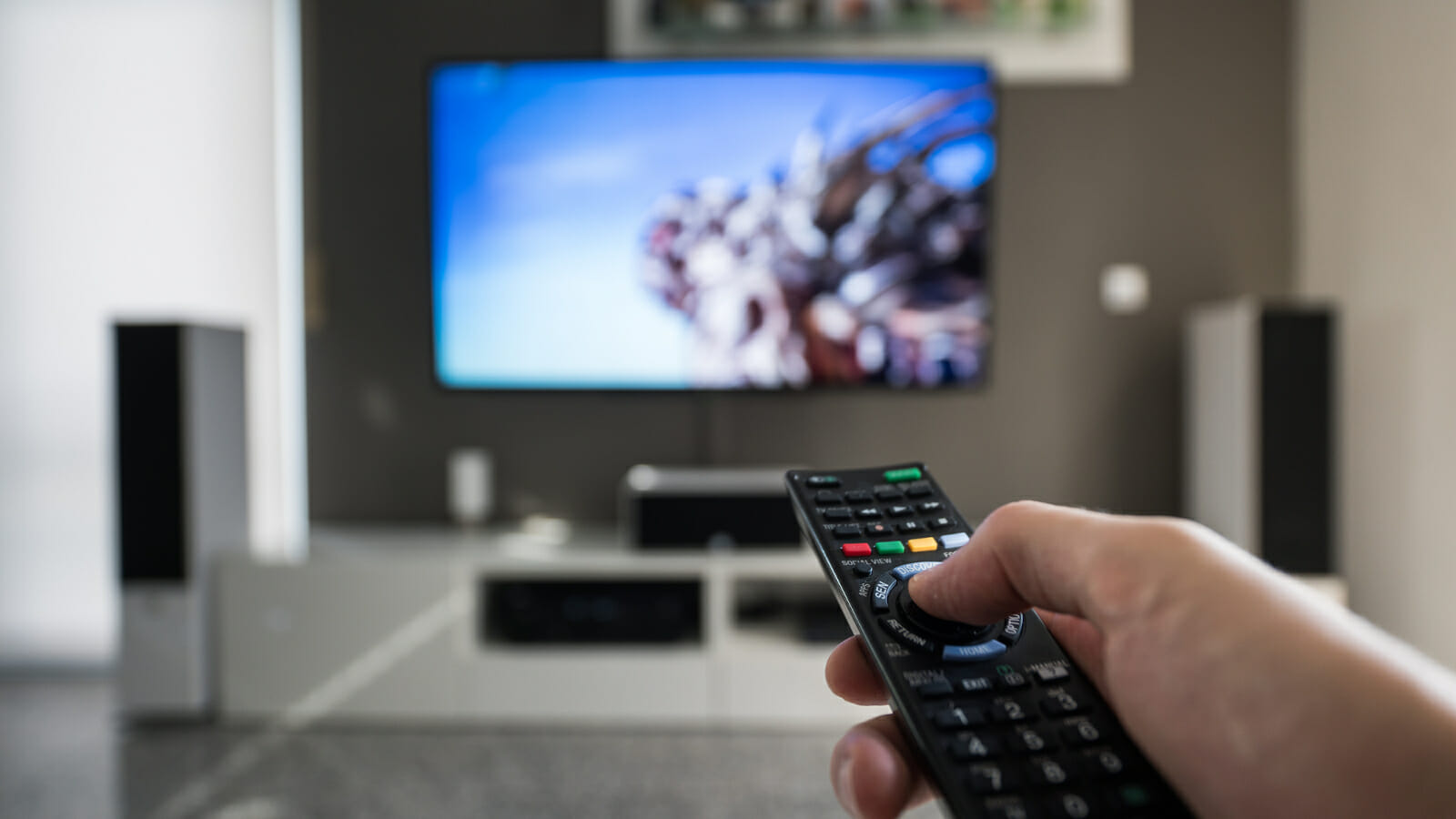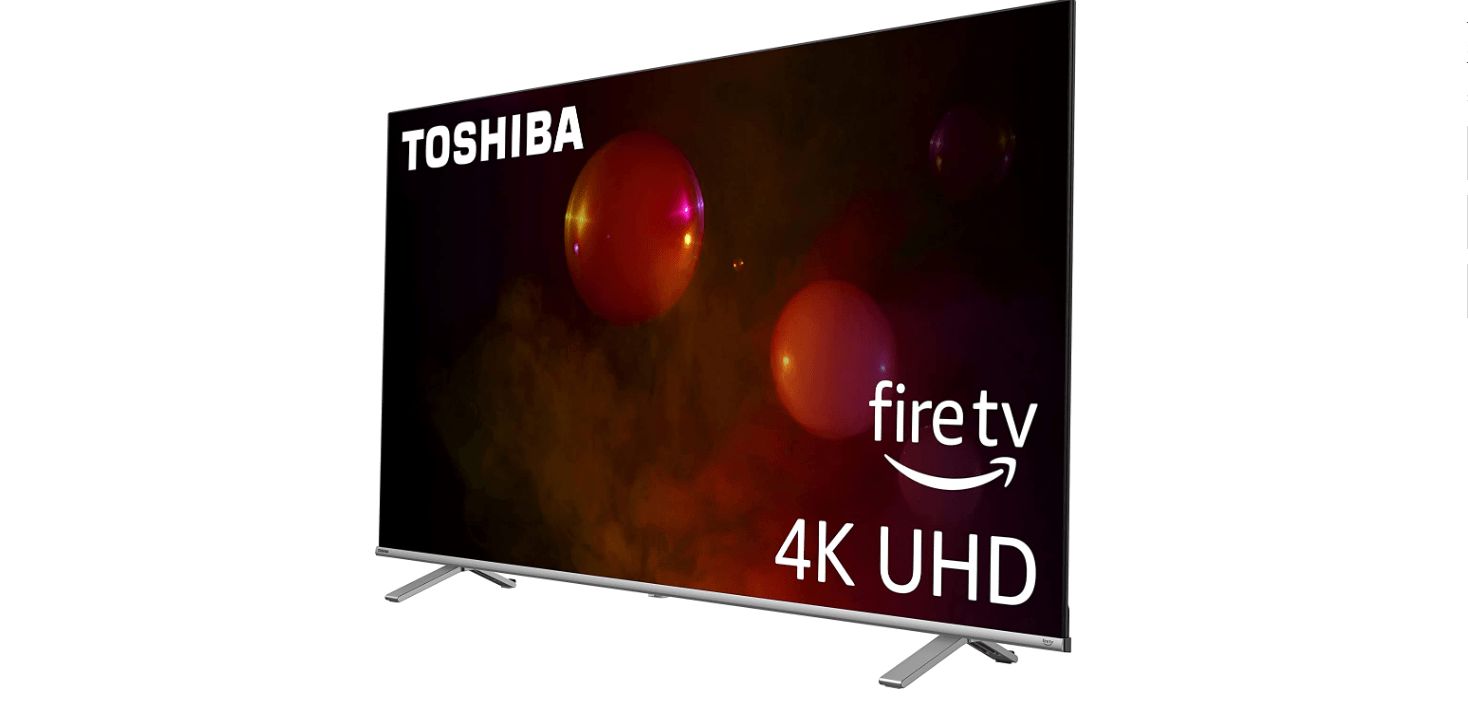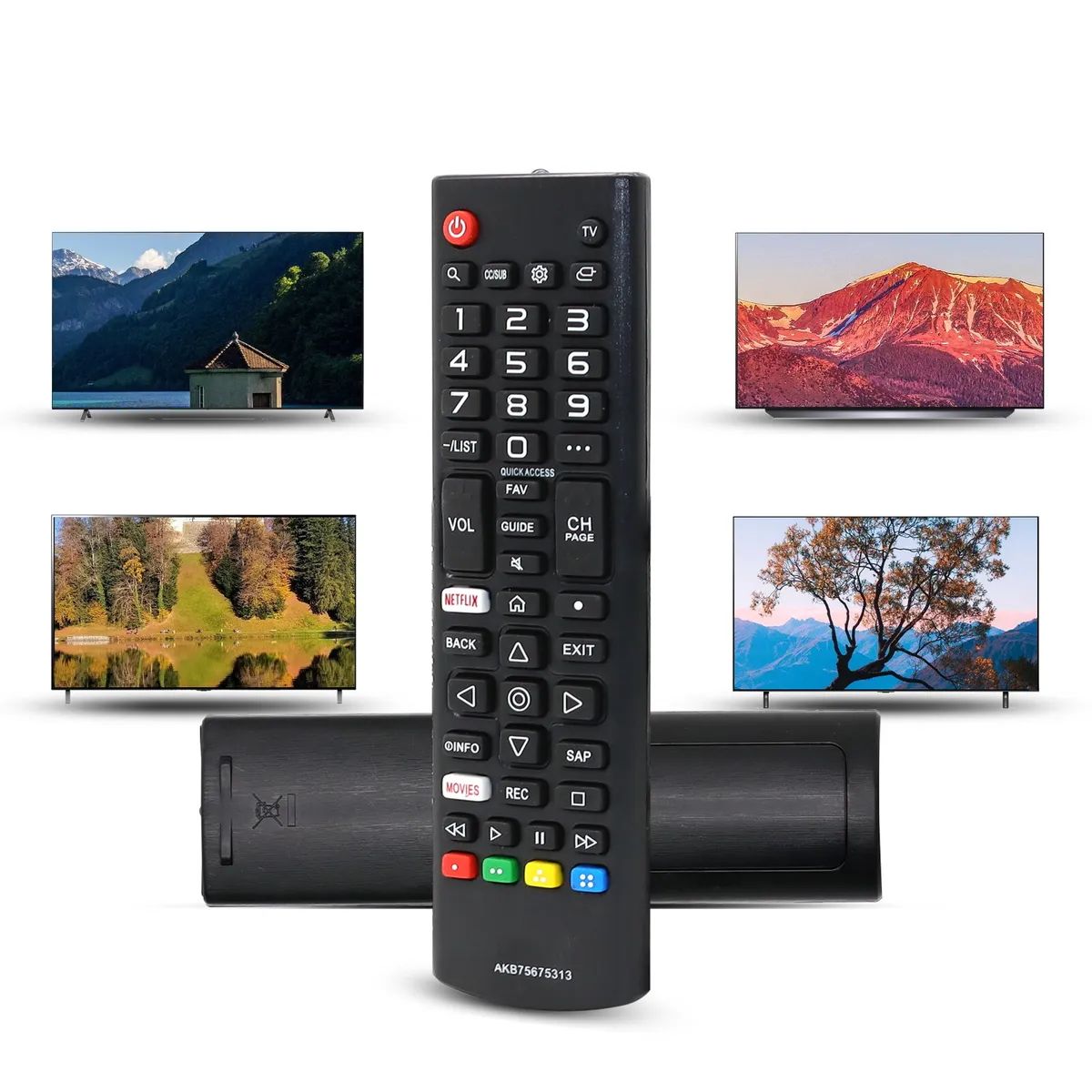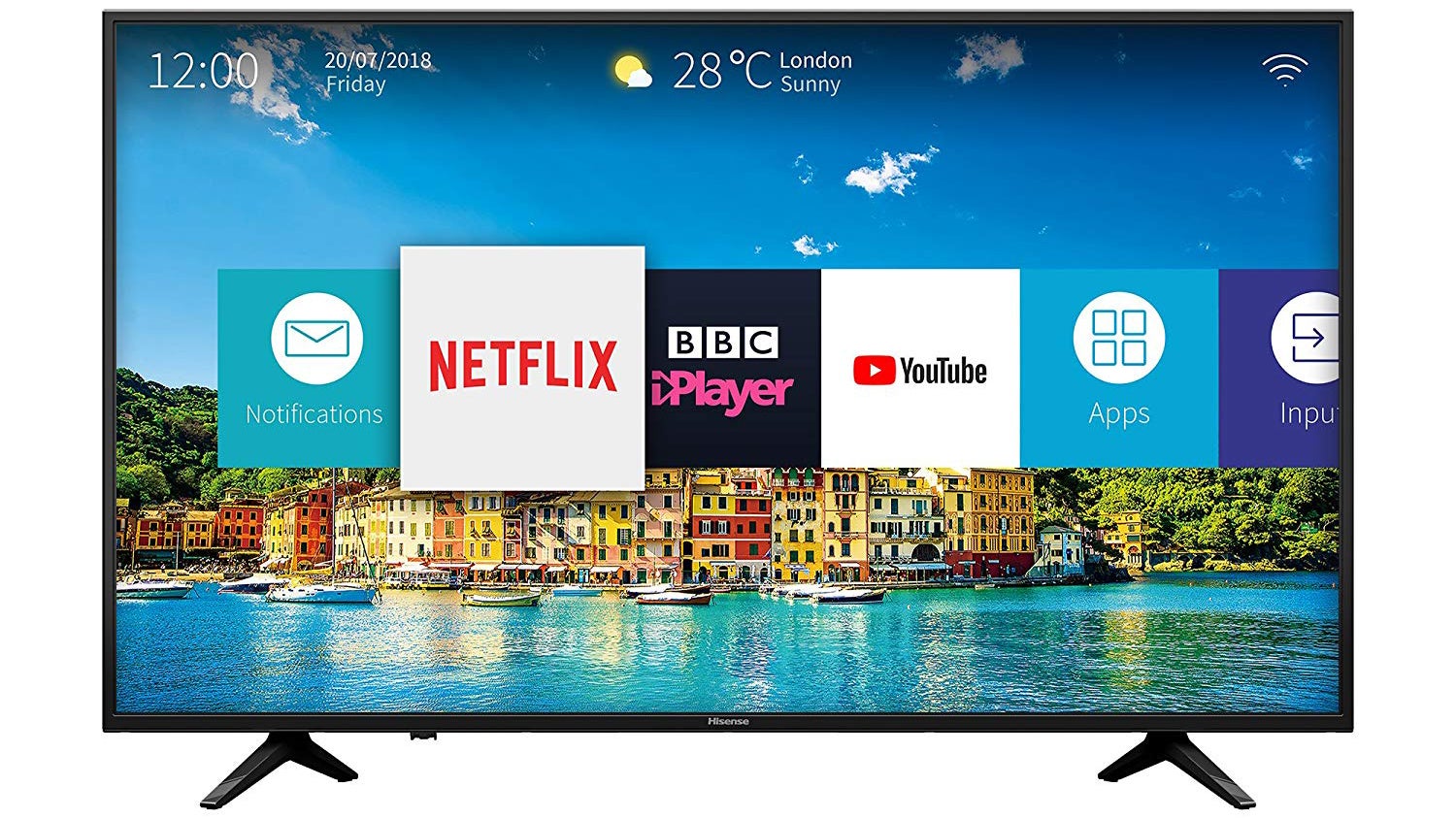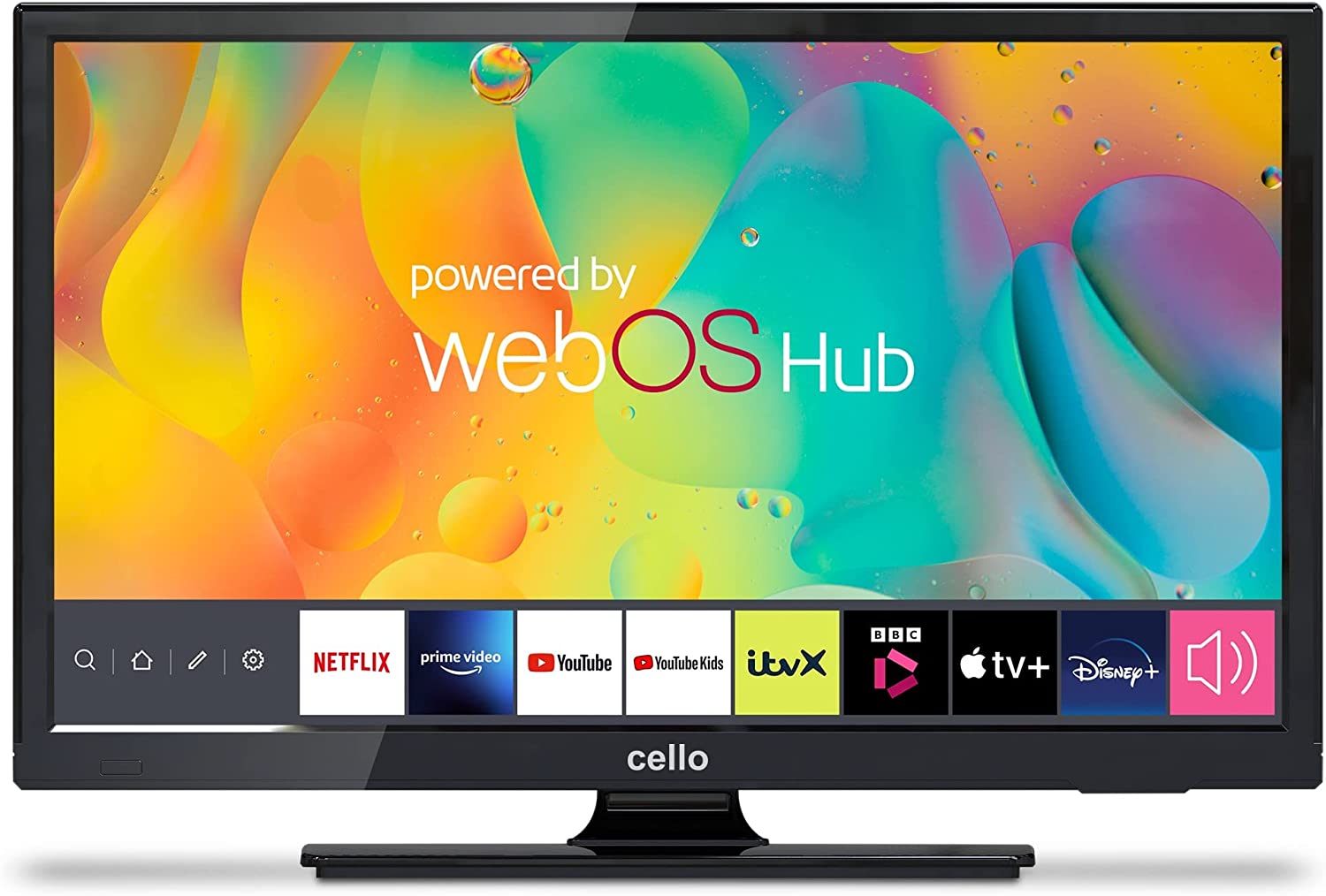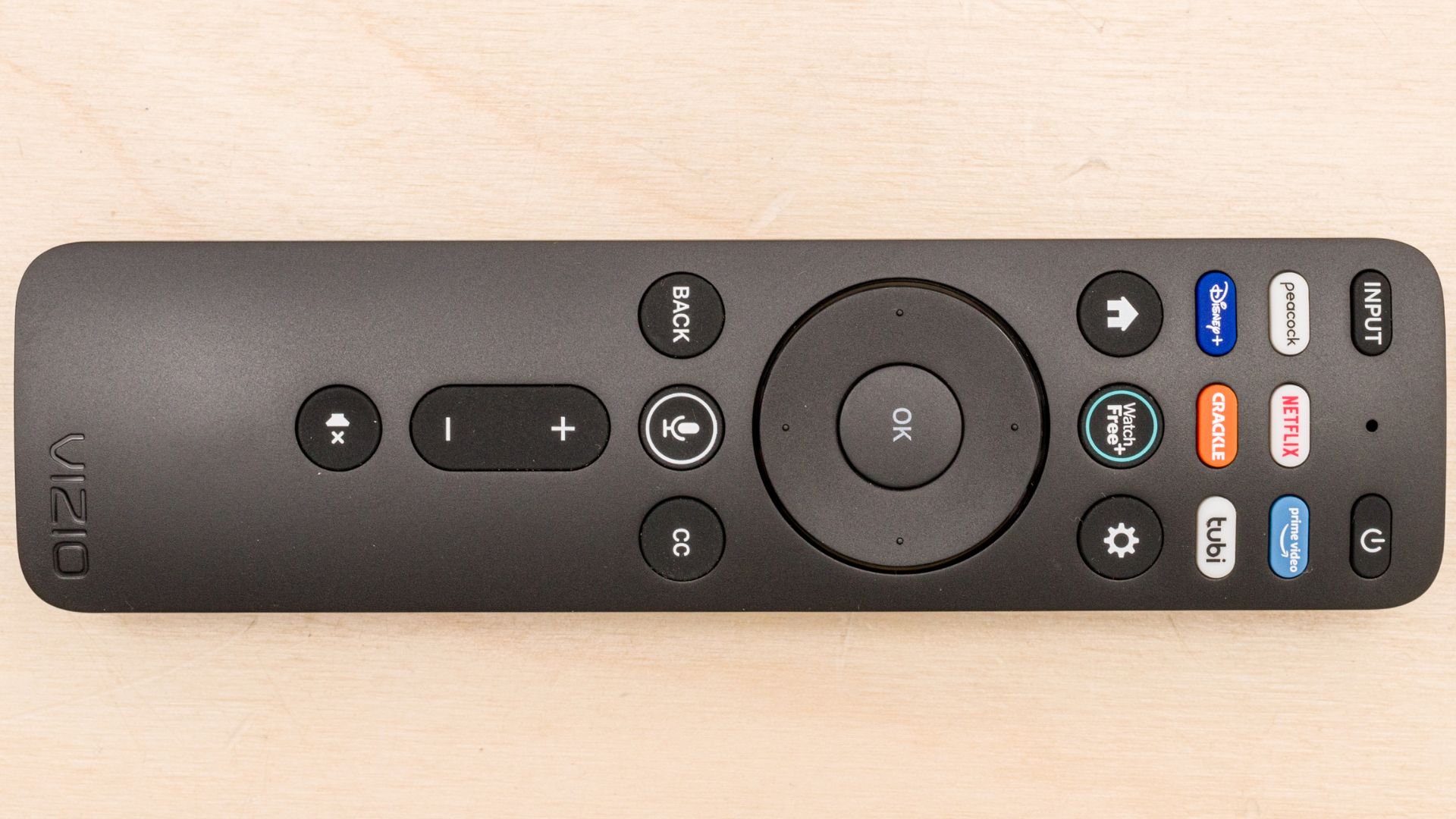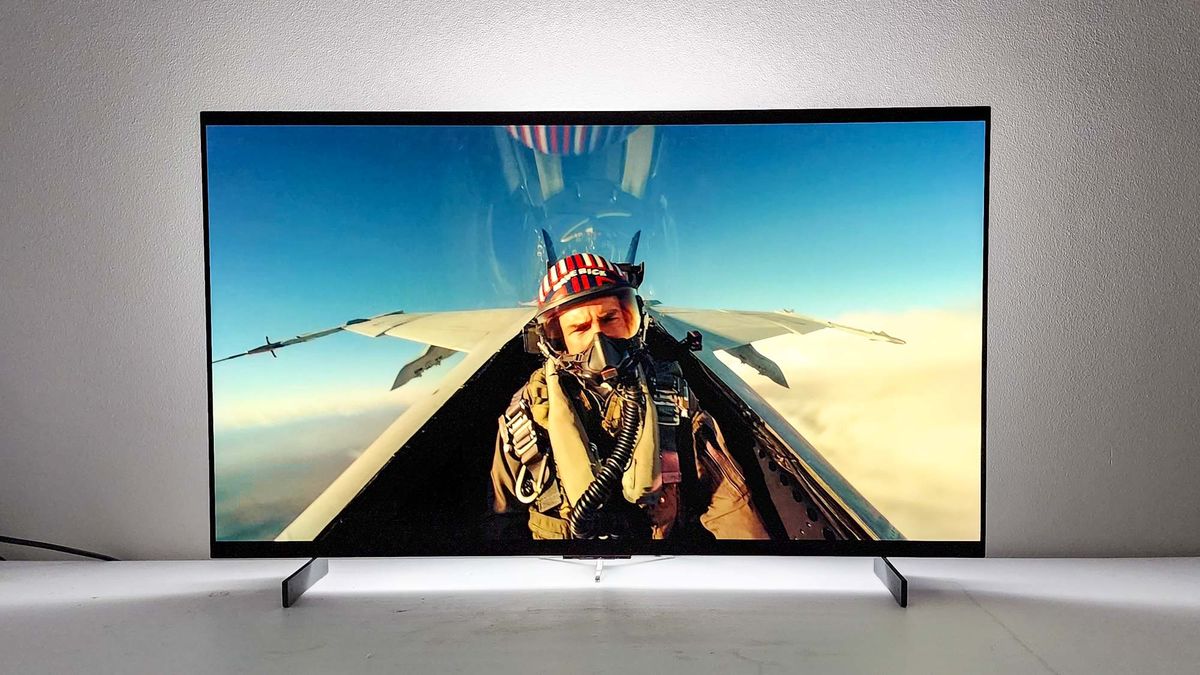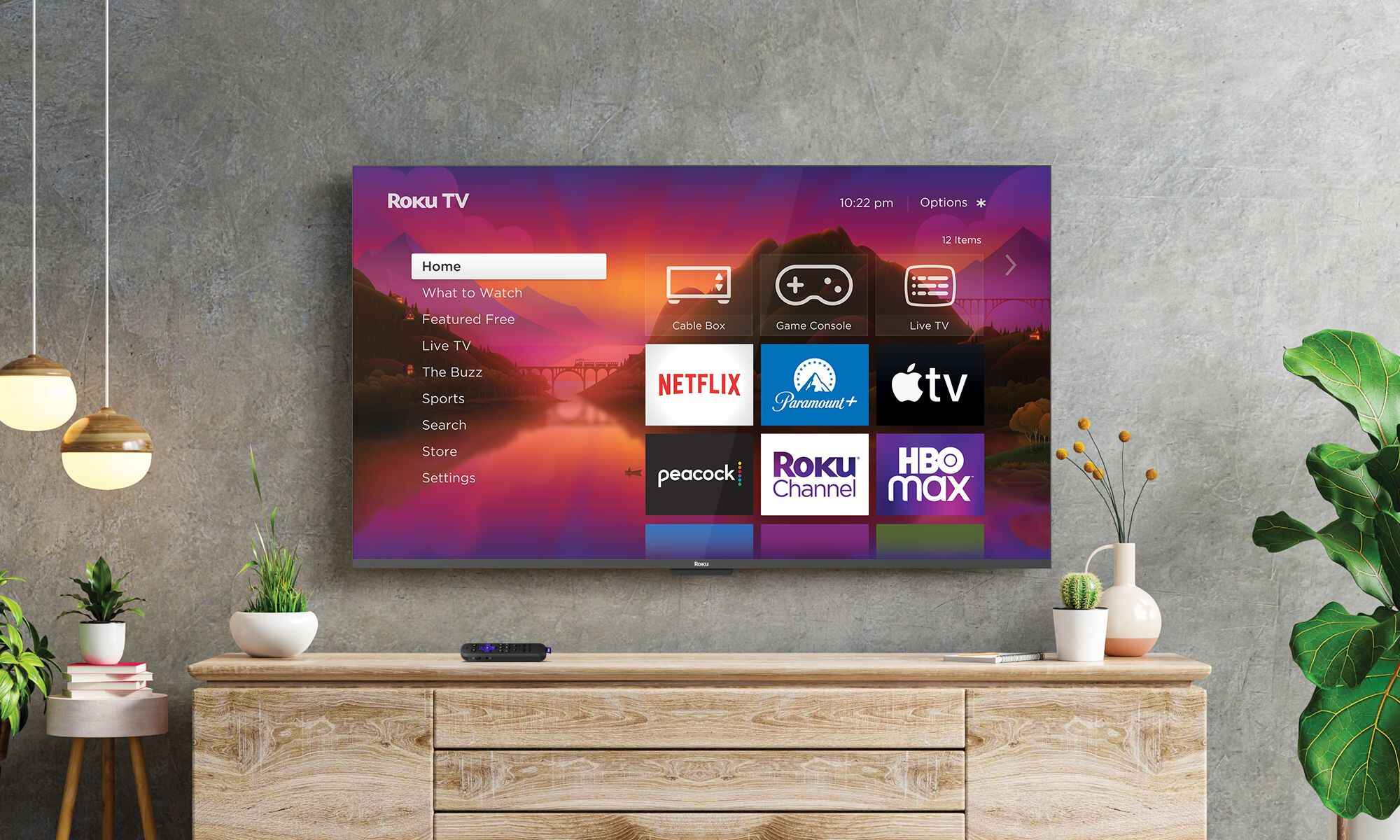Introduction
Welcome to the world of Smart TVs! In this technology-driven era, traditional TVs are being replaced by the more advanced and versatile Smart TVs. With their internet connectivity and integrated streaming services, Smart TVs have revolutionized the way we watch and interact with our favorite shows and movies.
A Smart TV, short for “Smart Television,” is a television set that combines traditional television programming with internet capabilities. It allows users to access a wide range of online content, such as streaming platforms like Netflix, YouTube, and Hulu, directly on their TV screens. Additionally, Smart TVs often come equipped with built-in apps, web browsing capabilities, and the ability to connect to other smart devices.
The concept of Smart TVs has evolved over time. Originally, TVs were solely used for broadcasting television channels through aerial or cable connections. However, as technology advanced, so did the capabilities of televisions. The advent of internet connectivity paved the way for Smart TVs, enabling users to access a vast array of online content all in one place.
Smart TVs offer a multitude of features and capabilities that enhance the entertainment experience. One of the standout features is the ability to stream content on-demand. Whether it’s binging the latest Netflix series, watching viral videos on YouTube, or catching up on missed episodes of your favorite shows, Smart TVs put the power of choice in your hands.
Furthermore, Smart TVs provide access to applications, similar to those found on smartphones and tablets. These applications, or “apps,” allow users to access popular streaming services, social media platforms, and even games. This versatility transforms the TV into a hub for all your entertainment and communication needs.
The benefits of using a Smart TV go beyond just entertainment. With their internet connectivity, Smart TVs offer a range of interactive features. Some models feature voice control, allowing users to navigate through menus, search for content, or adjust settings using voice commands. Others offer screen mirroring, enabling users to display the content from their smartphones or tablets directly on the TV screen.
Definition of a Smart TV
A Smart TV, also known as a connected TV or hybrid TV, is a television set that combines traditional television programming with internet connectivity and interactive features. Unlike conventional TVs, which rely solely on terrestrial or cable connections to display content, Smart TVs offer a more advanced and diverse viewing experience.
At its core, a Smart TV is essentially a computerized television that can access and stream online content. It has the ability to connect to the internet either through a wired Ethernet connection or wirelessly via Wi-Fi. This internet connectivity allows users to access a wide range of digital content beyond traditional television channels.
Smart TVs come equipped with an operating system specifically designed to provide a user-friendly interface. This operating system often includes a dashboard or home screen where users can access various apps, streaming services, and other interactive features. Some popular operating systems used in Smart TVs include Android TV, Tizen, webOS, and Roku TV.
One of the defining features of Smart TVs is their ability to access streaming services directly on the TV screen. Instead of relying on external devices like streaming boxes or dongles, Smart TVs have built-in apps for popular streaming platforms such as Netflix, Amazon Prime Video, Hulu, and Disney+. This integration allows users to stream their favorite movies and shows without the need for additional equipment.
In addition to streaming services, Smart TVs offer a range of interactive features. These can include web browsing capabilities, social media integration, video calling applications, and even voice control. Some models even have built-in cameras and microphones for video chatting or gesture control.
It’s important to note that not all “smart” features are created equal. Some TVs may have limited internet connectivity, offering only basic apps and services, while others may have more advanced features and a wider range of compatible apps. It’s essential to consider your usage and entertainment needs when choosing a Smart TV.
With their internet connectivity and interactive features, Smart TVs have transformed the way we consume content. Whether you want to stream the latest blockbuster, catch up on missed episodes of your favorite TV series, or browse the web from the comfort of your couch, a Smart TV provides a comprehensive entertainment experience right in your living room.
Evolution of Smart TVs
The evolution of Smart TVs has been remarkable, with advancements in technology and consumer demand driving their development. As television sets transformed from bulky CRT TVs to sleek flat screens, so too did the capabilities of Smart TVs.
Smart TVs first made their appearance in the late 2000s, when manufacturers like Samsung, LG, and Sony began integrating internet connectivity into their television sets. These early Smart TVs had limited functionality, often offering basic internet browsing and access to a few select apps.
However, as internet speeds increased and streaming services gained popularity, Smart TVs quickly evolved to meet the demands of users. Manufacturers began focusing on developing intuitive user interfaces and improving the range of available apps and streaming platforms.
Another significant development in the evolution of Smart TVs was the adoption of operating systems specifically tailored for these connected televisions. This allowed for better integration of apps and services, as well as improved performance and stability.
Today, Smart TVs offer a seamless and feature-rich experience. They come equipped with advanced processors, ample storage capacity, and high-resolution displays. The integration of voice control, artificial intelligence, and smart home compatibility has further enhanced the functionality of Smart TVs.
In recent years, there has been a surge in the popularity of Smart TVs with built-in voice assistants. These voice assistants, such as Amazon’s Alexa or Google Assistant, allow users to control their Smart TVs using voice commands. This convenient feature eliminates the need for manual input and provides an effortless way to navigate through menus, search for content, and control other connected devices.
As streaming services have become the primary mode of content consumption for many users, Smart TVs have adapted to cater to this trend. More apps and streaming platforms are now available, allowing users to access a wide range of content, from movies and TV shows to music and sports, all from the comfort of their living rooms.
The future of Smart TVs is promising, with ongoing advancements in technologies such as artificial intelligence, virtual reality, and augmented reality. These innovations will continue to enhance the viewing experience, offering personalized recommendations, immersive content, and interactive features that blur the lines between traditional television and digital entertainment.
Features and Capabilities of Smart TVs
Smart TVs offer a wide range of features and capabilities that enhance the viewing experience and provide a gateway to a world of digital content. These advanced televisions combine traditional TV programming with internet connectivity, interactive apps, and other sophisticated functionalities.
One of the key features of Smart TVs is their ability to access streaming services directly on the TV screen. With built-in apps for popular platforms like Netflix, Amazon Prime Video, and Hulu, users can enjoy a vast library of movies, TV shows, and original content with just a few clicks. The convenience of streaming eliminates the need for additional devices and simplifies the entertainment setup.
Smart TVs also offer web browsing capabilities, allowing users to surf the internet right from their TV screens. This feature enables users to access websites, check emails, and stay connected with social media platforms without the need for a separate computer or smartphone. Some Smart TVs even come with a wireless keyboard or a built-in virtual keyboard for ease of navigation.
Interactive apps are another notable feature of Smart TVs. These apps go beyond streaming services and include a wide variety of entertainment, educational, and productivity applications. From gaming apps to fitness apps, users can find apps to cater to their diverse interests and needs. Whether you want to play games, learn a new language, or follow a workout routine, there’s likely an app available to enrich your Smart TV experience.
Voice control has emerged as a popular feature in modern Smart TVs. With voice-assistant integration like Amazon Alexa or Google Assistant, users can control their TVs using simple voice commands. This hands-free operation allows for easy navigation, content search, and even adjusting settings. By simply speaking to the TV, users can change channels, adjust volume, play music, or get answers to questions without picking up the remote.
Smart TVs also offer connectivity with other smart devices, such as smartphones, tablets, and wearables. This integration allows for seamless content sharing and screen mirroring. Users can effortlessly mirror the content on their mobile devices onto the larger Smart TV screen, making it ideal for showcasing photos and videos or playing mobile games with a bigger display.
In terms of display quality, Smart TVs have embraced technological advances such as 4K resolution and HDR (High Dynamic Range). These features enhance color accuracy, contrast, and overall picture quality, resulting in a more immersive and lifelike viewing experience. Some high-end models even support features like Dolby Vision or OLED (Organic Light-Emitting Diode) display technology for the ultimate visual experience.
Lastly, Smart TVs often come with multiple connectivity options, including HDMI ports, USB ports, and Bluetooth capabilities. These allow for the connection of external devices such as gaming consoles, soundbars, or external speakers, enhancing the audio and video output of the Smart TV.
With a plethora of features and capabilities, Smart TVs have become the centerpiece of modern home entertainment systems. They provide a versatile and convenient platform that combines broadcast television, streaming services, internet browsing, and apps all in one device.
Benefits of Using a Smart TV
Smart TVs offer a myriad of benefits that enhance the television viewing experience and provide a gateway to a world of digital entertainment. These innovative devices have revolutionized how we consume content and have become an integral part of modern home entertainment systems.
One of the key benefits of using a Smart TV is the access to a wide range of streaming services. With built-in apps for popular platforms like Netflix, Hulu, and Amazon Prime Video, users can easily stream their favorite movies, TV shows, and original content directly on their TV screens. This eliminates the need for external devices and provides a convenient and seamless entertainment experience.
Furthermore, Smart TVs often come with integrated app stores, allowing users to explore and download a variety of applications to enhance their entertainment options. These apps can offer additional streaming services, games, educational content, and even fitness programs, providing a diverse array of choices to suit every interest and preference.
Internet browsing capabilities is another major advantage of Smart TVs. With a built-in web browser, users can effortlessly surf the internet and access their favorite websites directly from their TV screens. This is particularly beneficial for viewing online content that may not be available through traditional broadcast television.
Smart TVs also offer the convenience of voice control. With voice-assistant integration like Amazon Alexa or Google Assistant, users can control their TVs using voice commands. Whether it’s changing channels, adjusting the volume, or searching for specific content, voice control simplifies the navigation process and provides a hands-free alternative to using the remote control.
Another advantage of Smart TVs is their ability to connect with other smart devices. Through wireless connectivity and compatibility with devices such as smartphones, tablets, and wearables, users can easily share and stream content from their mobile devices onto the larger Smart TV screen. This feature is ideal for sharing photos and videos with friends and family or enjoying mobile games on a bigger display.
Smart TVs offer a more personalized and interactive viewing experience. With features like content recommendations based on viewing habits, users can discover new shows and movies tailored to their preferences. Additionally, Smart TVs often have built-in features for customization, allowing users to create personalized home screens, organize apps, and set preferences for their browsing and streaming experience.
Furthermore, Smart TVs have evolved to become smart home hubs. With the integration of smart home technology, users can control compatible smart devices, such as lights, security systems, and thermostats, directly from their TV screens. This central control hub simplifies the management of smart devices, providing a unified interface for the connected home.
Lastly, the display quality of Smart TVs has significantly improved over the years. With features like 4K resolution and HDR, Smart TVs offer stunning visuals, vivid colors, and enhanced contrast. This ensures a more immersive and lifelike viewing experience, whether you’re watching movies, sports, or playing video games.
In summary, the benefits of using a Smart TV are plentiful. From easy access to streaming services and apps, to internet browsing capabilities, voice control, and the integration with smart home devices, Smart TVs provide a comprehensive entertainment solution. They bring together traditional television programming, digital content, and interactive features in a single device, elevating the home entertainment experience to new heights.
Popular Smart TV Brands and Models
When it comes to Smart TVs, several brands have established themselves as leaders in the industry, offering a wide selection of models with cutting-edge features and reliable performance. Here are some of the most popular Smart TV brands and models available today:
- Samsung: Samsung is a renowned brand in the world of Smart TVs, known for its sleek designs, vibrant displays, and user-friendly interfaces. Their Smart TV lineup includes models like the Samsung QLED series, which feature stunning 4K or 8K displays, Quantum Dot technology for enhanced color accuracy, and a wide range of smart features such as voice control and app integration.
- LG: LG is another leading brand in the Smart TV market, offering a diverse range of models to suit different budgets and requirements. LG’s OLED TVs are highly regarded for their exceptional picture quality, deep blacks, and wide viewing angles. Additionally, LG’s webOS platform provides a smooth and intuitive user interface, making navigation and app access effortless.
- Sony: Sony is known for its commitment to delivering high-quality entertainment experiences, and their Smart TV offerings are no exception. Sony’s BRAVIA series boasts impressive picture quality, powerful processing capabilities, and support for various HDR formats. The Android TV operating system provides access to a vast array of apps and content, while features like voice control and Google Assistant integration add convenience and interactivity.
- TCL: TCL has garnered attention in recent years for its affordable yet feature-packed Smart TVs. Their lineup includes models with 4K resolution, HDR support, and built-in Roku OS – a user-friendly platform that offers a wide selection of streaming apps and a simple interface. TCL’s value-for-money proposition makes them a popular choice for budget-conscious consumers.
- Vizio: Vizio is known for offering feature-rich Smart TVs at competitive prices. Their SmartCast platform provides seamless streaming and access to popular apps like Netflix, Amazon Prime Video, and Hulu. Vizio TVs often come with full-array local dimming for improved contrast and picture quality. Additionally, certain models offer voice control functionality through integration with assistants like Amazon Alexa or Google Assistant.
These are just a few examples of the many Smart TV brands and models available in the market. Other notable brands include Hisense, Philips, Panasonic, and Sharp, each offering their own unique features and functionality.
When choosing a Smart TV, it’s important to consider factors such as screen size, resolution, connectivity, and the specific features that best align with your preferences and needs. Reading reviews, comparing specifications, and consulting with experts can help you make an informed decision and find the perfect Smart TV to elevate your home entertainment experience.
How to Choose the Right Smart TV for You
Choosing the right Smart TV can seem like a daunting task due to the vast array of options available in the market. However, by considering a few key factors, you can narrow down your choices and find the perfect Smart TV to suit your needs and preferences. Here are some essential considerations to keep in mind:
- Screen Size: The screen size of your Smart TV plays a crucial role in the viewing experience. Consider factors such as the size of your room and the distance between the TV and the seating area to determine an appropriate screen size. Opt for a larger screen if you have a spacious living room or often watch movies and sports, but make sure it doesn’t overwhelm the space.
- Resolution: The resolution determines the sharpness and clarity of the image displayed on the TV screen. The most common resolutions for Smart TVs are 1080p (Full HD) and 4K Ultra HD. If your budget allows, consider opting for a 4K TV as it provides a higher level of detail and enhanced picture quality, especially for larger screens.
- Operating System: Pay attention to the operating system of the Smart TV as it determines the user interface, app availability, and ease of use. Popular operating systems for Smart TVs include Android TV, webOS, Roku TV, and Tizen. Research each system and choose the one that offers the apps and features you desire, with a user-friendly interface.
- Connectivity: Evaluate the connectivity options of the Smart TV. Look for multiple HDMI ports, USB ports, and Wi-Fi capabilities, as these are essential for connecting external devices, gaming consoles, and other peripherals. Additionally, if you rely on streaming services, ensure that the TV has built-in Wi-Fi or Ethernet connectivity.
- Smart Features: Assess the range of smart features offered by the Smart TV. Consider whether you prefer voice control capabilities, integration with virtual assistants, or smart home compatibility. Determine the features that align with your lifestyle and will enhance your overall Smart TV experience.
- Price: Set a budget for your Smart TV purchase and consider the price range that falls within your budget. Keep in mind that higher-priced models often come with more advanced features and better picture quality, but there are also budget-friendly options that offer excellent value for money.
Once you have considered these factors, read reviews, and compare specifications of different Smart TVs that meet your requirements. Pay attention to aspects such as picture quality, color accuracy, viewing angles, and overall performance. It’s also beneficial to visit a physical store to see the TVs in person and get a sense of their build quality and image display.
Lastly, don’t forget to check the warranty and after-sales support provided by the manufacturer. A reliable warranty and accessible customer service can provide peace of mind and ensure assistance in case of any issues or concerns with your Smart TV.
By evaluating these factors and doing thorough research, you can confidently choose a Smart TV that meets your needs, fits your budget, and provides a delightful, immersive, and personalized home entertainment experience.
Setting up and Connecting a Smart TV
Setting up and connecting a Smart TV is a relatively straightforward process that can be done by following a few simple steps. Whether you’re a tech-savvy individual or a novice user, here’s a general guide to help you get started:
- Unbox and Position: Begin by carefully unboxing your Smart TV and placing it in the desired location. Ensure that there is sufficient space around the TV for ventilation and that it is positioned at a height and angle that provides optimal viewing comfort.
- Connect Power: Connect the power cord to the TV and plug it into a power outlet. Make sure the power source is easily accessible and provides stable power to avoid any issues with the TV’s functionality.
- Connect to the Internet: Connect your Smart TV to the internet to access online content and streaming services. Most Smart TVs offer both wired Ethernet and wireless Wi-Fi connectivity options. If using a wired connection, connect an Ethernet cable from the router to the TV’s Ethernet port. For a wireless connection, access the TV’s settings menu, navigate to the network settings, and select your Wi-Fi network. Enter the network password, if prompted.
- Update Firmware: After connecting to the internet, check for any software or firmware updates for your Smart TV. Updating the firmware ensures that your TV has the latest features, bug fixes, and security enhancements. Follow the instructions provided by the manufacturer to initiate the update process.
- Pair the Remote: Depending on the Smart TV model, you may need to pair the remote control with the TV. Follow the instructions in the TV’s user manual to pair the remote, which typically involves pressing specific buttons in a certain sequence or inserting batteries into the remote.
- Set Up Accounts: Create or log in to your accounts for streaming services or other apps that require authentication. This may involve visiting the respective app’s website on a computer or mobile device and following the instructions to link your Smart TV to your account.
- Personalize Settings: Adjust the settings according to your preferences. This includes selecting a language, choosing picture and sound settings, adjusting the aspect ratio, and customizing the home screen layout. Refer to the TV’s user manual for detailed instructions on navigating the settings menu and making adjustments.
- Connect External Devices: If you have any external devices such as gaming consoles, soundbars, or set-top boxes, connect them to your Smart TV using the available HDMI ports. Simply plug one end of an HDMI cable into the device and the other end into an HDMI port on the TV. Ensure you select the correct input source on the TV to display content from the connected device.
- Test and Enjoy: Once everything is connected and set up, test your Smart TV by accessing various streaming services, browsing the internet, and adjusting settings as needed. Enjoy the wide range of entertainment options and make any additional adjustments based on your preferences.
Following these steps will help you set up and connect your Smart TV, bringing the world of online content and interactive features right into your living room. If you encounter any difficulties or have specific questions about your Smart TV model, consult the user manual or reach out to the manufacturer’s customer support for assistance.
Additional Accessories for Smart TVs
While Smart TVs come equipped with a range of features and capabilities straight out of the box, there are several additional accessories that can enhance your viewing experience and provide added convenience. These accessories complement the functionality of your Smart TV and offer various functionalities. Here are some popular accessories for Smart TVs:
- Streaming Devices: Although Smart TVs have built-in streaming capabilities, you may consider using additional streaming devices to expand your streaming options. Devices like Amazon Fire TV Stick, Roku Streaming Stick, or Apple TV offer access to a broader range of streaming apps and services, making it easier to discover new content and enjoy a seamless streaming experience.
- Soundbars and Speakers: While modern Smart TVs come with built-in speakers, adding external sound systems can greatly enhance your audio experience. Soundbars or surround sound systems can provide immersive sound quality, making movies, shows, and gaming more engaging. Consider options that offer virtual surround sound or soundbar models with wireless subwoofers for deep bass.
- Universal Remote Controls: If you have multiple devices connected to your Smart TV, a universal remote control can simplify the control process. Universal remotes enable you to consolidate the controls of various devices, such as streaming devices, gaming consoles, and sound systems, into a single remote. Look for models that offer easy programming and compatibility with your Smart TV and other connected devices.
- TV Wall Mounts: If you prefer to mount your Smart TV on the wall, a TV wall mount is necessary. Wall mounts provide a secure and space-saving solution, allowing you to position your TV at an optimal viewing angle. Make sure to choose a wall mount that is compatible with your TV size and VESA mount standard.
- Wireless Keyboards and Mouse: If you frequently browse the internet or use apps on your Smart TV, a wireless keyboard and mouse can make inputting text and navigating menus easier. These accessories eliminate the need for tedious on-screen typing selections and provide a more comfortable and efficient way to interact with your Smart TV.
- Gaming Controllers: If you enjoy gaming on your Smart TV, consider investing in a dedicated gaming controller. Gaming controllers offer better control and precision for gaming experiences, especially for games that require more advanced input than a regular TV remote. Ensure compatibility with your Smart TV and check for features like wireless connectivity and ergonomic design.
- HDMI Cables and Extensions: High-quality HDMI cables are essential for connecting external devices to your Smart TV. Consider purchasing HDMI cables that support the latest standards, such as HDMI 2.0 or HDMI 2.1, to ensure compatibility with 4K resolution and high dynamic range (HDR) content. Additionally, HDMI extensions can be useful for extending the reach of your HDMI ports if your devices are located far from the TV.
- Cleaning Kits: To keep your Smart TV screen and body clean and free from dust and smudges, it’s advisable to invest in a cleaning kit specifically designed for electronic devices. These kits typically include a microfiber cloth, screen cleaner solution, and other tools to safely and effectively clean your TV without causing any damage.
These are just a few examples of the many accessories available for Smart TVs. Your choice of accessories depends on your specific needs and preferences. It’s important to ensure compatibility with your Smart TV model and consider the features and quality offered by each accessory before making a purchase.
By adding these accessories to your Smart TV setup, you can enhance your entertainment experience, improve audio quality, simplify control, and optimize the viewing arrangement. Experiment with different accessories and find the combination that best meets your requirements, taking your Smart TV experience to the next level.
Common Issues and Troubleshooting Tips for Smart TVs
Although Smart TVs are feature-packed devices that offer a seamless entertainment experience, they may encounter occasional issues that can disrupt your viewing pleasure. Here are some common issues faced by Smart TV users and troubleshooting tips to help resolve them:
- Connectivity Problems: One of the most common issues with Smart TVs is connectivity. If you experience Wi-Fi connection issues, ensure that the TV is within range of the router. Try restarting both the TV and the router, or switch to a wired Ethernet connection if available. If the problem persists, check for software updates for your TV, as manufacturers often release firmware updates to address connectivity issues.
- App Malfunctions: Issues with apps freezing, crashing, or not working properly can occur on Smart TVs. Start by force quitting the problematic app and relaunching it. If that doesn’t work, try clearing the cache and data for the app in the TV’s settings menu. You may also need to uninstall and reinstall the app to resolve any underlying software conflicts.
- Slow Performance: If your Smart TV is sluggish or slow to respond, check if there are any background processes or downloads running that might be consuming resources. Close unnecessary apps and perform a restart to free up memory. It can also be helpful to disable any unnecessary background services or animations in the TV’s settings to improve overall performance.
- No or Poor Picture Quality: If you experience issues with picture quality, first ensure that your TV is running on the appropriate resolution settings. Check for any loose connections or damaged cables that may be affecting the signal quality. If you are streaming content, consider upgrading your internet speed or connecting to a wired Ethernet connection for a more stable and reliable streaming experience.
- Audio Issues: If you’re experiencing audio problems, first check if the TV’s volume is properly adjusted and not muted. Verify that the external audio devices, such as soundbars or speakers, are properly connected and turned on. If the problem persists, try changing the audio output settings on your TV to ensure it is correctly configured for your setup.
- Remote Control Problems: If your remote control is not functioning correctly, start by checking the batteries and replacing them if necessary. Ensure that there are no obstructions between the remote and the TV. Try pairing the remote with the TV again according to the manufacturer’s instructions. If all else fails, you can use a universal remote control as a replacement.
- System Updates: Smart TV manufacturers often release software updates to improve performance, fix bugs, and introduce new features. Regularly check for system updates in the TV’s settings menu and install the updates when available. Keeping your TV’s firmware up to date can resolve many common issues and ensure optimal performance.
If these troubleshooting tips are unable to resolve your Smart TV issues, consult the TV’s user manual or reach out to the manufacturer’s customer support for further assistance. They can provide specific guidance tailored to your Smart TV model and help resolve any persistent issues you may be experiencing.
By addressing these common issues and following the troubleshooting steps, you can overcome most challenges encountered with Smart TVs, ensuring a smooth and enjoyable viewing experience.
Conclusion
Smart TVs have revolutionized the way we consume and interact with digital content. With their internet connectivity, streaming capabilities, and a wide range of apps and features, Smart TVs have become the centerpiece of modern home entertainment systems.
In this article, we explored the definition of a Smart TV and its evolution from traditional televisions. We discussed the features and capabilities that make Smart TVs stand out, such as access to streaming services, web browsing, interactive apps, voice control, and smart home integration. We also highlighted popular Smart TV brands and models, emphasizing the importance of choosing the right one for your needs.
We provided guidance on setting up and connecting a Smart TV, explaining the necessary steps to ensure a smooth and hassle-free setup process. Additionally, we discussed the availability of additional accessories that can further enhance the Smart TV experience, such as streaming devices, soundbars, universal remotes, and gaming controllers.
Lastly, we addressed common issues that users may encounter with their Smart TVs and provided troubleshooting tips to help resolve these issues. By following the suggested troubleshooting steps, users can overcome connectivity problems, app malfunctions, slow performance, and other common challenges that may arise.
Smart TVs continue to evolve and improve, offering even more advanced features and technologies. From voice assistants and AI integration to enhanced display capabilities like 8K resolution and improved HDR, the future of Smart TVs looks promising.
As you navigate the world of Smart TVs, remember to consider your specific needs and preferences when choosing a model and take advantage of the available features and accessories to tailor your entertainment experience to your liking. With a Smart TV at the heart of your home entertainment setup, you can enjoy a world of digital content, personalized features, and seamless connectivity.









